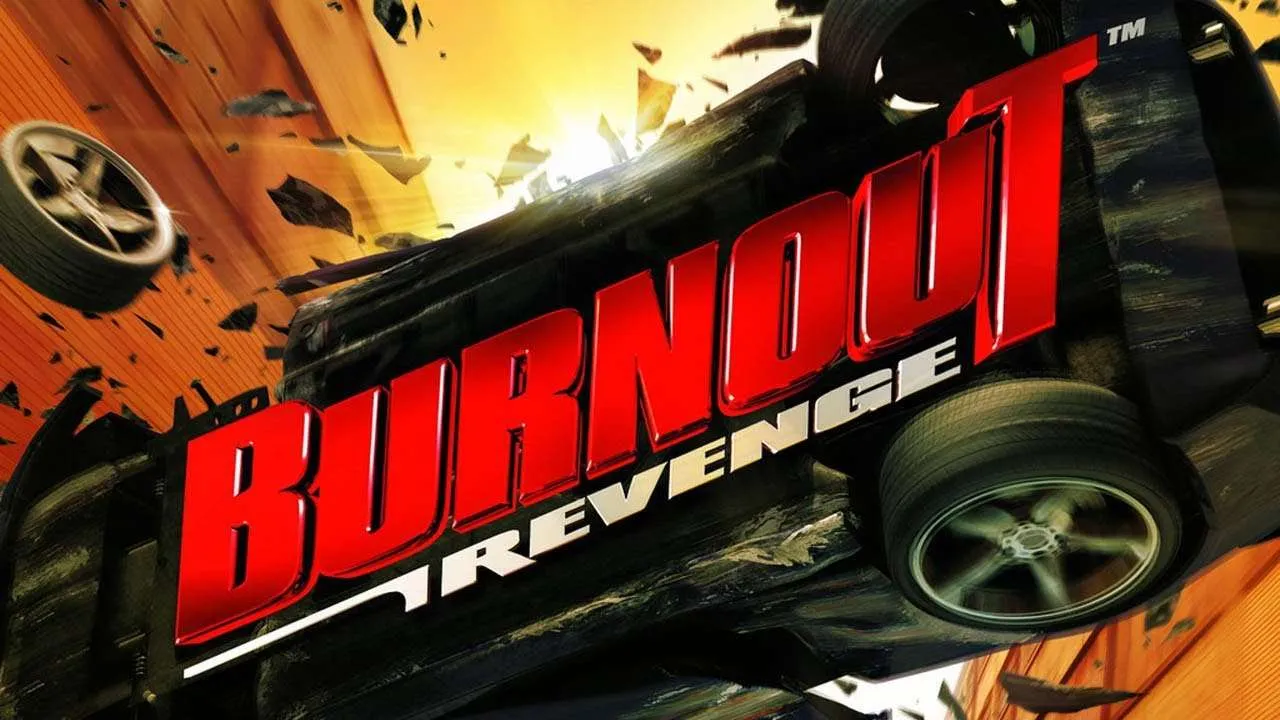
The Burnout franchise debuted on GameCube, PS2, and Xbox in 2002 as a flagship title for the now-defunct publisher Acclaim. The series really hit its stride with 2004’s Burnout 3: Takedown. Burnout Revenge is the fourth installment in the action-packed, heart-pounding arcade-style racing franchise. And guess what? It’s still good over a decade later.
The game itself takes place over a large number of courses, spanning the greater United States and into Europe and Asia. The marketing for the game focused heavily on down and dirty racing in the Motor City with its dilapidated buildings and bulky, post-industrial vibe. But there are other locales as well, including a similarly run-down Los Angeles, lush waterway races through Miami, and a historic race through Rome.
Gone are the heavily-populated streets of the downtown Chicago track from Burnout 3, where cruising along the elevated train line could often prove hazardous. In are back-alleys and whatever shortcuts you can come across, whether through the Los Angeles River’s cement surface or through industrial buildings in Detroit.
The single-player experience in Burnout Revenge (World Tour) plays out a lot like Burnout 3, with snazzier cutscenes and slightly more differentiation between races. Through each race, you’ll be earning a rating of “OK,” “Good,” “Great,” or “Awesome” for your speed, aggression, use of nitro, and other variables. So while you might want to be the first person to reach the goal, how you get there and what you do to get there will determine what rating you receive.
With each rating, an award (Bronze, Silver, Gold) is issued. Gold awards move your rating up one place, so “Good” becomes “Great,” “Great” becomes “Awesome,” and “Awesome” becomes “Perfect.” Your overall rating determines how many stars you get, which in turn unlocks new events and new rides.
You can earn stars in seven different game modes. Burning Lap is a race where you complete a lap in a given amount of time. Traffic Attack has you check traffic, causing as much damage as possible in the allotted time. Race is two laps against six competing opponents. In Crash, you try to ensure as much damage (valued in cash) as possible at a given intersection. Road Rage has you meet a certain Takedown target. Grand Prix is a series of three races, earning points for your place in each race. The racer with the most points at the end of the GP wins. Finally, there’s Elimination, where the last place car of six is eliminated every 30 seconds. There are also Crashbreaker events for Race, Road Rage, and Eliminator, which allow you to explode your car if you crash, depending on if you have a speed boost.
The multiplayer mode has a two-player split-screen option or six-player pass-the-controller option, as well as online modes (which are no longer active, obviously). The multiplayer modes include Race, Road Rage, Traffic Attack, Crash Battle, Crash Party, and Crash Tour. Most allow you to select a vehicle, a location, a track, and so forth.
I’ve noticed two glaring problems with the multi-player, both being game modes. Traffic Attack’s main problem is the goal; the player with the most damage (in terms of cash) wins, with the problem being that if one player gets a jump on the traffic, he or she will leave little, if any, traffic for the opponent. The same can be said for Crash Battle, where one person will likely monopolize all of the traffic damage.
Close calls were one of the coolest parts of Burnout 3: Takedown. There are a few moments like that in Revenge where I felt the same way, but the frequency of that has been dramatically decreased by your access to side routes, even though the computer AI seems more aggressive in this iteration. One of the biggest assets that this franchise had was the “holy crap” factor. That’s pretty much gone in Burnout Revenge.
While some of the white-knuckle panic play might be gone, there is a greater sense of speed in Burnout Revenge. Some of the vehicles in this game max out at over 200 miles per hour. There are some new things added to the mix, namely same-lane traffic hitting. You can now use same-lane traffic to gain an advantage as both a torpedo — hitting them into opponents or a wall — or as a means to gain boost. It’s your call. Aside from traffic takedowns, there’s also a vertical takedown this year, meaning you can crash down on a foe from a ramp, a higher-leveled highway, and so on.
As I’ve previously expressed, Burnout 3: Takedown was the hands-down best racing game of 2004 and probably of its entire generation. The development team for Burnout Revenge had a tough task going into 2005, approximately a year after Takedown, and transforming the genre once again. The result is a competently-crafted sequel that, unlike its predecessor, does not revolutionize the way we play racers. Instead, it builds upon — and improves upon, in many ways — what already existed last year. As it is, Burnout Revenge is a solid effort by Criterion, given the time restraints put on them by management. Still, it’s not as memorable as Burnout 3: Takedown.
This review was originally published in 2005. It has been proofread and updated with the help of Proofreading Monkey. If you are an author, blogger, or professional writer and need error-free copy, check out Proofreading Monkey for their affordable proofreading services.